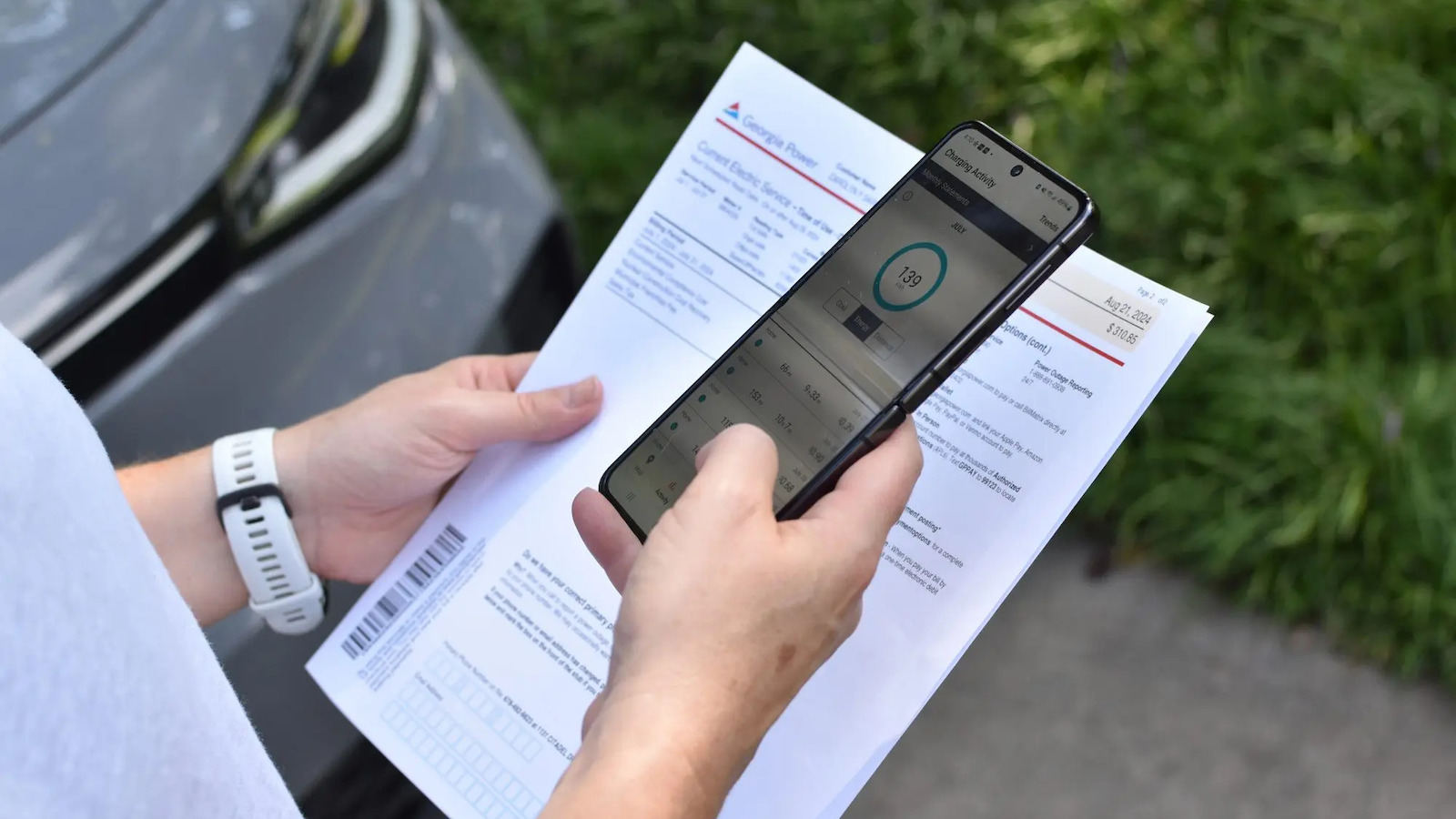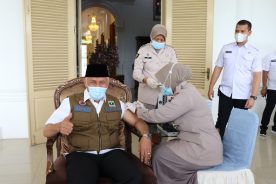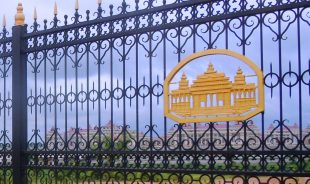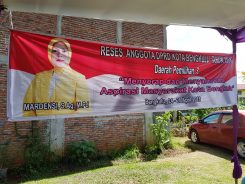Last October, Georgia Power approached regulators with what it said was a crisis. Unless they did something soon, they discovered, the growing demand for electricity would outpace production sometime in the winter of 2025. Georgia’s Governor Brian Kemp and other state leaders had been courting data centers and new manufacturing plants for some time, and it was all catching up to the aging power grid.
The Georgia Public Service Commission, the elected body tasked with regulating the utility company, had approved Georgia Power’s long-term grid plan, which the company makes every three years, in 2022. Since then, the company said, its projections for the growth of electricity demand through 2030 had increased by a factor of 17.
Georgia Power proposed a mix of resources to meet this rising demand, including buying power from neighboring utilities, adding solar and battery storage, and building three new natural gas turbines that could generate 1,400 megawatts of electricity, enough to power more than half a million homes, per year. Experts, including some on the service commission’s own staff, have questioned those projections and the power company’s method of making its forecast. They testified that the growth in energy demand would take longer to materialize than the company projected, giving the utility more time to address the problem. The plan for gas-powered turbines also drew sharp criticism from experts and members of the public alike, who said the utility should rely on carbon-free solutions.
The proposals to buy electricity, meanwhile, drew less attention and criticism, but they raised suspicions from ratepayer advocates and environmentalists because they bypassed normal procedure. When Georgia Power needs to buy more energy from another power company, it is required by statute to issue a request for proposals, or RFP, and choose the best bid. But faced with the data center-driven spike in demand, the utility did not solicit competitive bids. Instead, it used a provision of Georgia law that allows for exceptions for “resources of extraordinary advantage that require immediate action” as long as the PSC approves, which the commission may do retroactively. And so, in October, before any public hearings over Georgia Power’s request for more energy took place, the power company orchestrated two deals, known as power purchase agreements, or PPAs, with Santa Rosa Energy, in Florida, and with Mississippi Power — the latter of which is owned by the same corporation that owns Georgia Power, the Southern Company. The exact pricing of the deal was filed as trade secret, meaning the service commission, its staff, and intervening parties like environmental and business groups could see how much Georgia Power is paying Mississippi Power but members of the public cannot; this is common practice for information that could be of economic value.
It wasn’t until April 2024 that Georgia’s Public Service Commission approved the utility company’s new plan, including both purchase agreements. Under the deal, the Georgia utility will buy 750 megawatts of electricity through 2028 from its Mississippi sibling company and up to 230 MW from the Florida plant. According to the final agreement approved by the PSC, Georgia Power will collect an additional $3 per kilowatt year on the power transferred from Mississippi beginning in 2026.
Power purchase agreements like the ones Georgia Power has entered into are not uncommon, especially for the Southern Company and its affiliates, Ari Peskoe, director of Harvard University’s Electricity Law Initiative, told Grist. The company generally chooses, as a business strategy, “to build and rely on its own resources to meet demand in its territories,” he said. “That’s the standard utility business model, but the Southern Company pursues that model in a more aggressive way than any other utility company in America,” Peskoe added.
But some critics are skeptical of the utility’s argument that this urgency precluded competitive bidding. “There’s still time to do RFP processes; the business world can respond on an expedited basis,” said Daniel Tait, an Alabama-based researcher at the Energy and Policy Institute, a utility watchdog nonprofit. The agreement between two Southern Company affiliates, conducted in haste and shrouded from public scrutiny, smacked of self-dealing. And because the prices were redacted from the public, “we don’t know whether or not that was a good deal,” Tait said.
The deal came with an added concern: In order to provide electricity to Georgia, a Mississippi Power coal plant that had been slated for closure will need to keep running, reversing plans approved by Mississippi regulators and saddling residents of that state with the cost risks and pollution of coal to meet energy needs in Georgia. Georgia Power officials even cited that impending closure as a reason they entered into the deal last year. Asked by Georgia Power’s own lawyers why it was necessary to sign an agreement with a sister company, the utility’s director of resource planning Jeffrey Grubb replied, “Because those units would have been either retired or sold off-system and we needed certainty that they would be there to serve our customers.”
The Victor J. Daniel Electric Generating Plant, or Plant Daniel for short, sits in a rural area of Jackson County in the southeastern corner of Mississippi. It has operated two coal units since the 1970s; in 2001, two new gas combined cycle turbines were built on the same site. Together, the four units comprise the state’s largest single power station.
Coal is a notoriously polluting form of electricity generation, and Plant Daniel is no exception. In 2022, the power plant reported more than six million metric tons of greenhouse gas emissions to the EPA, more than any other facility in Mississippi. And a 2019 report found that the groundwater near Plant Daniel contained five times the safe amount of lithium, likely as a result of contamination from coal ash, a toxic byproduct of the coal-fired power process.
In 2018, the Mississippi Public Service Commission commissioned a review of its power reserves. Its consultants found that Mississippi Power had more power plants than its customers needed — a “substantial and persistent capacity overhang that imposes excess costs on ratepayers.” To address this, they suggested retiring the two coal units at Plant Daniel. Nothing changed until 2020, when the commission ordered Mississippi Power to come up with a plan to deal with its 950 megawatts of excess capacity; the following year, the utility announced it would retire the coal units by 2027.
At the time, environmentalists celebrated the decision. “Retiring Plant Daniel means folks living in the area can breathe easier knowing that there is an end date to burning coal,” David Rogers, deputy director of the Sierra Club’s Beyond Coal Campaign said in a statement. “But this is also a win for all of Mississippi Power’s customers, who won’t have to pay for the expensive electricity the coal plant produces.” The deal between Georgia and Mississippi changed that. While Mississippi customers won’t be paying for the plant anymore, they’ll still have to deal with its continued air and coal ash pollution — and pay for any further cleanup that’s required.
According to a petition that Mississippi’s Sierra Club chapter filed in June with the Mississippi PSC, the regulatory body was not officially consulted on the deal with Georgia Power. In effect, critics of the deal charge, the arrangement allows Georgia Power to pay for the electrons but effectively offshore the externalities that make coal power unfeasibly expensive to Mississippi.
In January 2024, when Georgia Power finally faced public questioning about the deal, Tim Echols, one of Georgia’s public service commissioners, explicitly acknowledged this aspect of the deal: “I guess the benefit to it being outside is the pollution’s not in Georgia, right?” he said. “It’s in Mississippi. It’s in other places.”
To Mississippians, that comment was telling. It was cited in the Sierra Club petition, which asked the commission to weigh in on the purchasing agreement and require Mississippi Power to show how its plans to “continue operating several of its aging fossil plants and sell the power to Georgia Power” would impact Mississippi ratepayers.
“Continuing to operate these units past the previously established retirement dates poses potential economic risks to the [Mississippi Power] ratepayer, including potentially significant capital investments to comply with impending environmental regulations, maintenance costs, and risks associated with the storage of coal ash residuals at Plant Daniel,” Robert Wiygul, an attorney for the Sierra Club, wrote.
Each of Southern’s affiliates in Georgia, Alabama, and Mississippi has been granted a regional monopoly by statute in a large swath of its respective state. In lieu of the pressures to conduct business fairly and keep costs low for consumers that may in other regions come from market competition, the Southeast’s public service commissions theoretically serve as the forces to keep these companies in check. In everyday terms, this means that residents can’t choose what power company to pay their bills to, and electricity rates are set by the state’s service commission based on a formula by which the power company’s shareholders receive a fixed return on their investment in the company and ratepayers fund the utility’s capital investments, such as the construction of new power plants or other infrastructure, as long as it can justify the expenditure to the regulators. In bigger terms, the strength of their monopolies, the Southern Company’s overarching control, and the relative obscurity in which the commissions operate all amount to a situation in which private deals that have enormous, and sometimes negative, public implications are easily made.
Critics contend the region’s commissions should be more closely scrutinizing utilities’ decisions. “The Public Service Commissions and Public Utilities Commissions are supposed to govern the monopoly utilities to make sure that they’re making the decisions that are in the best interest of the ratepayers and not necessarily in the best interest of shareholders,” said Bryan Jacob, the solar program director for the nonprofit Southern Alliance for Clean Energy.
With the Georgia-Mississippi deal, the Southern Company accomplished not only forestalling the closure of a coal plant by selling the energy to itself, but also squeezing a few more dollars out of Plant Daniel’s final years with the additional revenue Georgia’s public service commission allowed it to collect.
When affiliate companies like Georgia Power and Mississippi Power enter into purchasing agreements, those deals are subject to an added layer of scrutiny from the Federal Energy Regulatory Commission, or FERC.
“The Company follows FERC protocols related to affiliate transactions and conducts regular employee training to ensure employees remain familiar with these protocols,” said Georgia Power spokesman John Kraft in a statement, adding that the Mississippi PPA complied with those protocols and was approved by the Georgia PSC. “More broadly, Georgia Power routinely selects resources through an RFP process that also assures appropriate relationships between affiliates.”
But this isn’t the first time Georgia Power’s deals with its fellow Southern Company affiliates have come under fire: in 2022, Jacob’s group and another Georgia sustainability nonprofit challenged five such agreements, arguing that the utility tailored its RFP to favor its sister companies. FERC ultimately disagreed and allowed the transactions, though one commissioner dissented.
Barring increased state PSC scrutiny or intervention from FERC, advocates contend there’s another way to prevent back-room deals that risk favoring affiliates to the detriment of customers: opening up the power marketplace. Utilities in other regions participate in regional transmission organizations and organized wholesale markets that see utilities and other owners of large-scale power generation buying and selling energy more publicly.
“Joining a regional wholesale market absolutely provides a transparency, governance, and platform to mitigate the risks of affiliate abuse in transactions across utilities,” said Katie Southworth, who leads policy efforts in the southeast for the Clean Energy Buyers Association, a group representing companies and governments looking to buy carbon-free energy to meet their own emissions goals.
The Southern Company, meanwhile, has lobbied hard against federal transmission reforms that would encourage greater interconnection between the nation’s fragmented electricity grids — and thereby potentially cut into its profits if cheaper energy from another producer is available in the region.
The company also opposes organized wholesale markets. In a statement to Grist, Southern Company listed what it considers the benefits of the vertically-integrated, regulated monopolies it operates in the southeast, arguing that they are more affordable and reliable for customers and treat electricity as a necessity rather than a commodity.
“The very nature of these [deregulated and regional transmission organization] markets — which are focused on short-term profits — encourages behavior that focuses on meeting short-term demand, rather than long-term planning,” the company’s statement read. “These companies are coordinated by unaccountable bureaucracies that place profits over people and often prioritize certain characteristics instead of working to achieve an optimal balance for all customers under any condition.”
The Southeast’s model of electricity regulation does have its defenders among some climate advocates who note that, simply put, a monopoly is more practically capable of financing a capital-intensive clean energy buildout than the rest of the country’s liberalized energy markets. Recent scholarship has highlighted financing as one of the main hurdles to an energy transition away from fossil fuels worldwide: even as subsidies and innovation have made renewable energy increasingly cheap, markets have not sufficiently rewarded actual investments in building it.
Proponents of deregulation and wholesale markets point to Texas, where a deregulated energy market has responded to rising demand and widespread grid failure during a winter storm with a solar-and-storage building bonanza. And they disagree with the notion that regulated-monopoly utilities provide more reliable energy. One benefit of regional transmission and sales, they contend, is that if a storm knocks out the power grid in one place, power can be brought in from an unaffected area.
“The weather is bigger than the grid,” said Southworth, “If you look at the rest of the country, [you’ll see] these wide swaths where regions are sharing reserves and working together to ensure reliable service.”
What’s even bigger than the weather, though, are the changes happening to the global climate and the burden on the earth that humans have created by burning fossil fuels. The Southern Company has an official target of achieving net-zero emissions by 2050 — but its regional affiliates disclaim any responsibility toward achieving that goal, leaving open the question of how the company as a whole can decarbonize while its subsidiaries are building new fossil infrastructure and delaying the retirement of existing coal plants.
This story was originally published by Grist with the headline Why Mississippi coal is powering Georgia’s data centers on Aug 27, 2024.
This content originally appeared on Grist and was authored by Emily Jones.
This post was originally published on Radio Free.













































